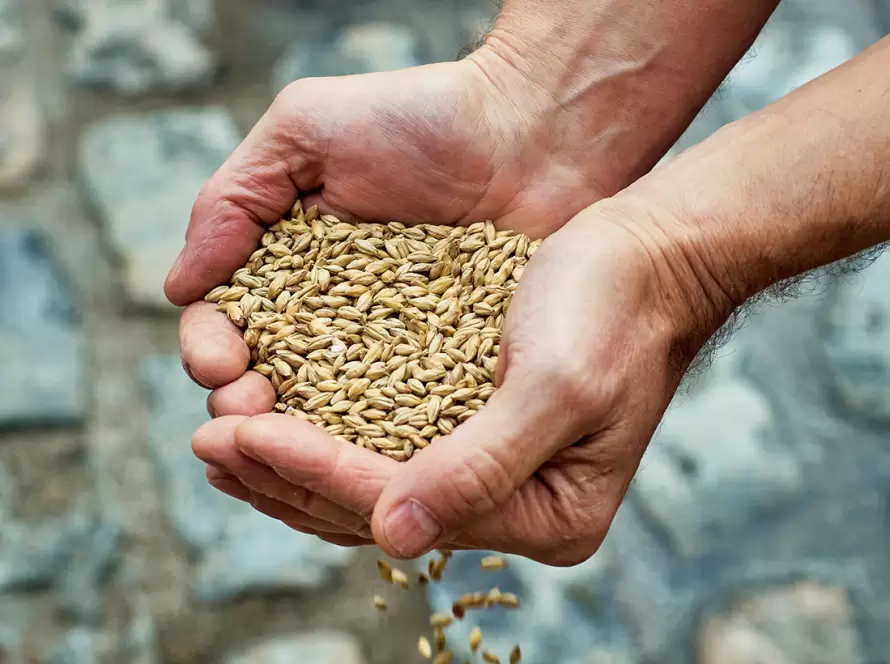Malt whisky, with its rich history and complex production manner, has evolved over the years. In current instances, there was a paradigm shift in the way distilleries approach whisky manufacturing. Sustainable practices have emerged as a focus, addressing environmental, social, and economic concerns. This article delves into the sustainable practices hired in malt whisky production, tracing the journey from grain to glass.
1. Sustainable Agriculture: Cultivating the Foundation
Organic Farming in Malt Whisky Production
The adventure to sustainability begins with the cultivation of barley, the number one element in malt whisky. Organic farming practices, keeping off synthetic pesticides and fertilizers, have received traction. Distilleries are partnering with farmers who prioritize soil fitness, crop rotation, and biodiversity to ensure the lengthy-time period sustainability of barley cultivation.
Water Conservation in Barley Farming
Water is a valuable aid, and its conservation is critical in sustainable agriculture. Distilleries are imposing progressive irrigation techniques and water-efficient farming practices to reduce the impact on local water sources.
2. Bottling: Sustainable Packaging Solutions
Eco-Friendly Packaging Materials
The very last degree of whisky production includes bottling, and distilleries are an increasingly number of conscious in their packaging picks. Sustainable substances, which include recycled glass and eco-friendly labels, are being embraced to reduce the environmental impact of the final product.
Minimalist Design and Reduced Carbon Footprint
Hibiki Japanese whiskey is revered not only for its exquisite taste but also for its aesthetic appeal and cultural significance. By embracing minimalist design principles and reducing its carbon footprint, Hibiki Whiskies further enhances its brand identity while championing sustainability in the spirits industry.
3. Malting: Transforming Barley with Efficiency
Sustainable Malting Practices
Malting is an essential degree in whisky production where barley undergoes germination and drying. Distilleries are adopting sustainable malting practices, consisting of energy-efficient kilns, recycled warmth, and the use of renewable power sources. This reduces the carbon footprint associated with malting.
Waste Utilization: Beyond Barley
Distilleries are locating creative methods to make use of through-merchandise of the malting process. Spent grains are regularly repurposed as animal feed or used in bioenergy production. This holistic method minimizes waste and contributes to a circular economic system inside the whisky industry.
4. Distillation: Crafting the Spirit Responsibly
Energy-Efficient Distillation Techniques
Traditional pot stills are a necessary part of malt whisky distillation, however, modern-day distilleries are incorporating power-efficient technologies. From warmness recovery systems to optimized distillation schedules, these improvements assist reduce power consumption and environmental effects.
Alternative Fuels in Distillation
Some distilleries are exploring opportunity fuels like biomass or inexperienced hydrogen to energy their stills. By moving far from traditional fossil fuels, they make contributions to decrease carbon emissions and foster a more sustainable manufacturing manner.
5. Maturation: Nurturing Flavors Consciously
Sustainable Maturation Warehousing
Wooden casks play a critical position in the maturation method, and distilleries at the moment are investing in sustainable maturation warehouses. These warehouses are designed to maximize natural temperature and humidity, lowering the need for excessive power consumption in climate manipulation.
Reusable Casks and Circular Economy
The idea of reusing casks for maturation aligns with the standards of a circular economy. Distilleries are exploring methods to extend the existence of casks, either through re-charring or experimenting with one-of-a-kind spirit kinds. This no longer simply reduces waste but additionally imparts particular flavor profiles to the whisky.
6. Social Responsibility: Empowering Communities
Fair Trade Practices
Sustainable whisky manufacturing extends beyond environmental considerations to encompass social obligation. Distilleries are conducting truthful alternate practices, ensuring that farmers, employees, and local groups concerned with the manufacturing procedure are handled ethically and compensated fairly.
Community Engagement and Education
Distilleries are actively involving local communities in their sustainability projects. Educational applications, community activities, and partnerships with local corporations are fostering a sense of shared responsibility for environmental stewardship.
7. Certification and Transparency: Building Consumer Trust
Sustainable Certification Programs
Certification packages, together with organic or carbon-neutral certifications, have become increasingly popular within the whisky industry. Distilleries are voluntarily looking for accreditation to illustrate their commitment to sustainable practices and build agreements with consumers.
Transparent Communication
Transparency in verbal exchange is key to setting up patron acceptance as true. Distilleries are openly sharing information approximately their sustainability tasks, from sourcing practices to production techniques, permitting customers to make informed choices aligned with their values.
Conclusion
The journey from grain to glass in malt whisky manufacturing is evolving, with a heightened recognition of sustainability. Distilleries are embracing modern practices to every degree, from cultivating barley to bottling the very last product.
As the whisky industry continues to navigate the sensitive stability among tradition and sustainability, those efforts contribute now not only to the conservation of the environment but also to the introduction of an extra conscientious and accountable whisky lifestyle. By elevating a pitcher of sustainably produced malt whisky, clients grow to be a part of a movement that cherishes the art of whisky making while safeguarding the planet for future generations.
